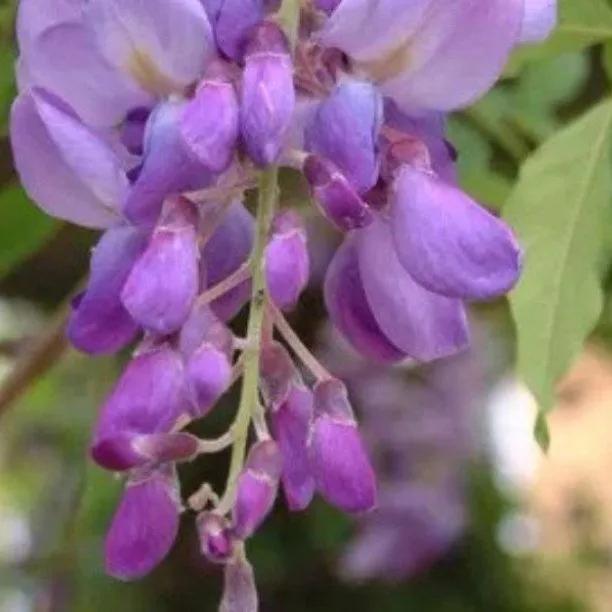Prolific Chinese Wisteria
The details
Wisteria sinensis
- Chinese Wisteria
- Large deciduous climber
- Lovely lilac/blue racemes of flowers
- Blooms in May-June, may repeat a little
- Delicate sweet perfume
- Fully hardy
- Will grow to 30/40'
- RHS Award of Garden Merit
Recommended extras
Description
Wisteria sinensis Prolific
Wisteria sinensis Prolific makes a huge beautiful statement with vast quantities of very pretty lilac/lavender pea flowers in long pendant racemes in May and June. The dark green pinnate leaves follow and there is often a small second flush in late summer.
The sweet scent hangs in the air on warm sunny days. It is fully hardy to -15C and will thrive in acid or alkaline soils in any fertile moist well-drained position. Given time it will reach extravagant heights, to 40' or more. It will need a strong support or host when the trailing stems will twine further. It prefers a sunny position but will tolerate partial shade.
Browse our variety of wisteria or see our full range of climbing plants.
Great for your garden:
Prolific is the most beautiful of climbers with huge showy scented lilac/blue racemes of flowers in May and June. It should always be grown in a prominent position, against a wall, on a pergola, a strong pillar, covering railings or even into a large tree.
It can be grown as a half standard on a frame where, if judiciously pruned, it will make a fabulous statement. The plant was introduced to the UK in 1816 by the English botanist Thomas Nuttall who brought it back from the United States, although its origins are in China. Examples can be seen growing in many great gardens such as Sissinghurst and Nymans.
Characteristics.
- Large deciduous climber
- Lovely lilac/blue racemes of flowers in May and June
- Lovely, delicate sweet perfume
- Fully hardy
- Will grow to an eventual height of 30'/40'
- Needs support
- Sun or partial shade
- Anti-clockwise twining
- RHS Award of Garden Merit
Look out for:
Wisteria sinensis is generally disease free although it can be prone, on occasions, to leaf spot and powdery mildew. Watch for yellowing leaves and honeydew (sticky coating on leaves). If these are seen mealybugs may have infested the plant. Treat with a proprietary control.
All parts of the plant are poisonous and will cause severe stomach problems if ingested. It needs pruning twice a year. Two months after flowering the long shoots should be cut back to 5 or 6 buds from the stem and then, in mid-winter, it should be cut back again to 2 or 3 buds from the stem.
Originates from woodland edges in China where is scrambles over cliffs and into trees. It was introduced by an English botanist and zoologist named Thomas Nuttall who named it after Dr Caspar Wistar, a famous physician.
Planting and Care Instructions
How to grow Wisteria sinensis:
Wisteria sinensis will need care while establishing.It will need a fertile, moist well-drained soil and a good root run. Plant in a hole substantially larger than the rootball and backfill with a multipurpose or suitable garden compost. Firm in well and water well. Mulch around the roots and feed with a general purpose fertiliser in spring and summer.
It will need the support of a pergola, pillar or vine eyes and wires when grown against a wall. The plant is vigorous with strong growth and so the support should be sufficiently sturdy. It is happy growing into a large tree if tied in while establishing.


